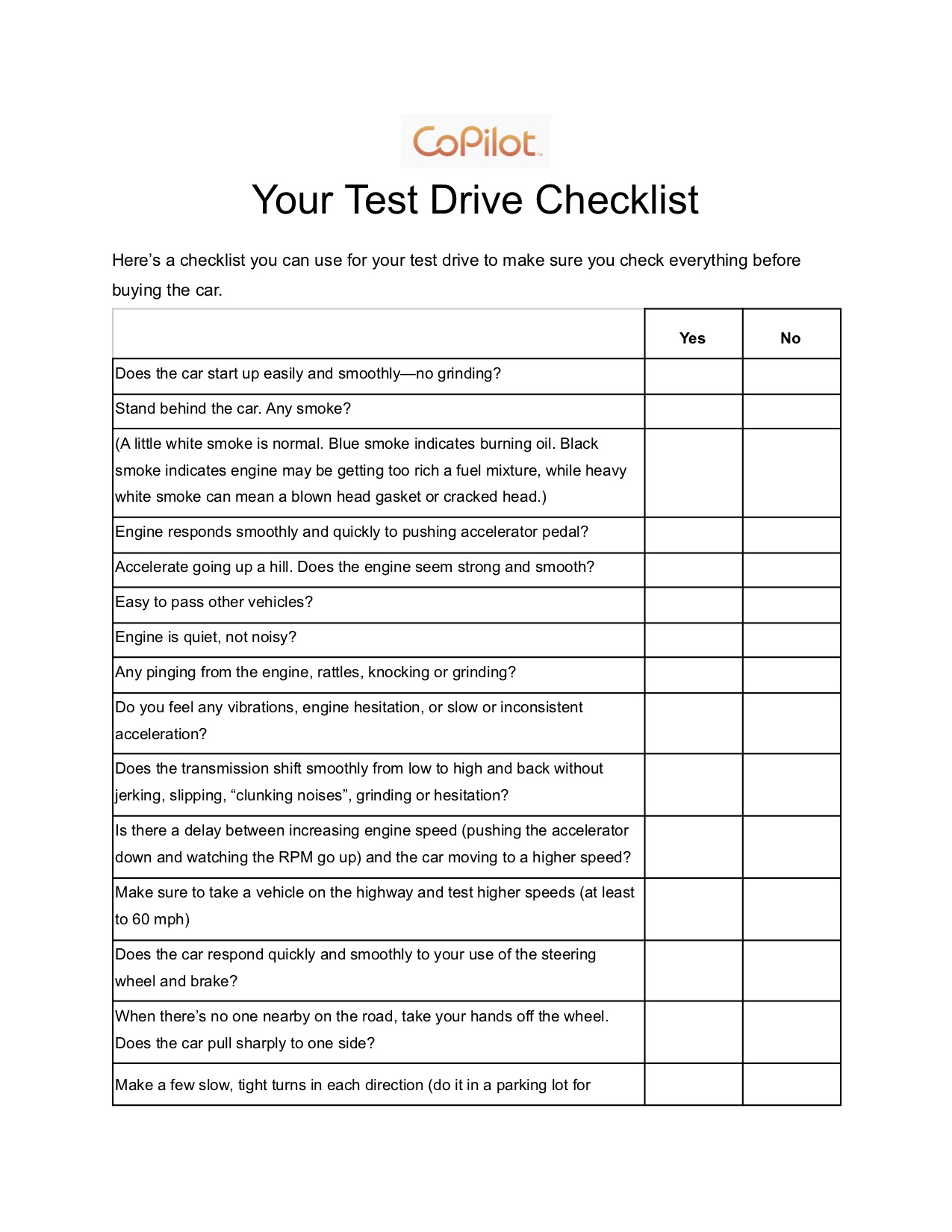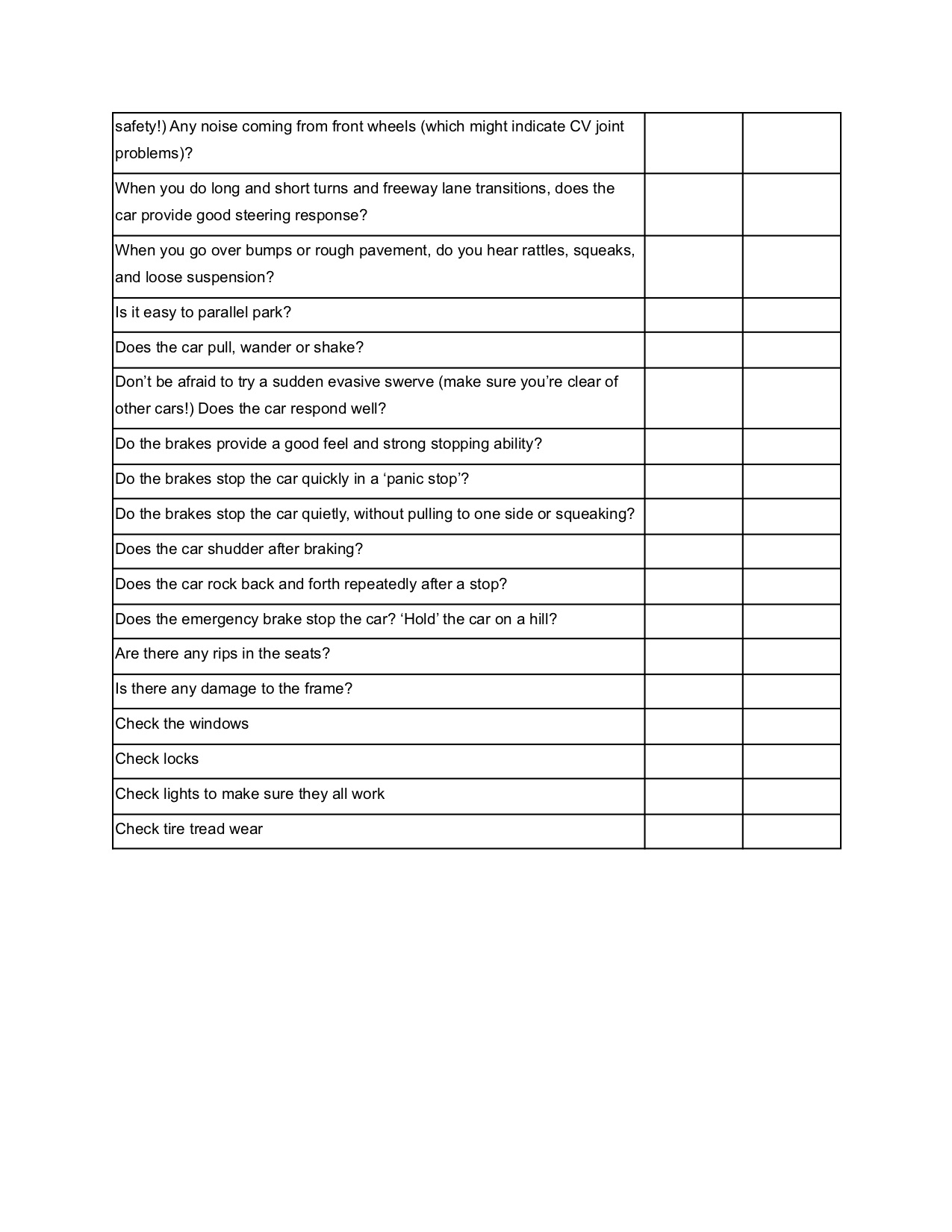Here’s Everything You Need On Your Used Car Inspection Checklist

Source: Pixabay
Buying a new car can be a challenging and tedious process, and buying a used car is no different. Before you buy a used car, there are a few minimum things you’ll want to check for to make sure you’re getting a safe and reliable ride. These things can vary based on vehicle make and model, but most items on the used car inspection checklist are the same.
It’s critical to consider the condition and value of a used vehicle, as well as how well its former owners kept it up to date. It’s always a good idea to have a technician who is knowledgeable about the brand and model you’re considering taking a look at. A mechanic’s knowledge of a particular vehicle type might alert you of current and future issues. The majority of repair or mechanic shops charge a reasonable fixed price of $100 to $200 for an inspection.
Used Car Inspection Checklist: The Eye Test
- Examine the oil dipstick to determine the oil’s level and condition. Burned oil might indicate significant problems down the line.
- Check the tread depth and quality of your tires. It’s important to do the math on how much purchasing new tires will cost.
- Examine the tread depth throughout the tire to check whether it is unevenly worn. Uneven tire wear may suggest a suspension or alignment issue.
- Look for evidence of wear on the car belts.
Although dealerships are trustworthy and would not try to sell you a faulty vehicle, it is possible for dealer repair facilities to overlook potential issues. Approach a used automobile with a critical eye if you’re in the market for one. Look for evidence of underlying difficulties beyond the visible.
- Reduced mileage indicates poor driving ability
- A high number of owners
- Records of service
- That particular vehicle’s safety ratings
- Recall lists
- Undercarriage rust or corrosion, especially if salt is used on the roads in the winter
- The tread life of the vehicle’s current set of tires
- The vehicle’s current market value
- The length of the manufacturer’s warranty
FEEL SECURE IN THE CAR YOU CHOOSE
You don’t want to buy a car - you want to get the best deal on the car you’re looking for. The CoPilot app will notify you if there’s a similar vehicle in your area at a better price, so you’re always certain you got the best deal available.
Used Car Inspection Checklist: The History
1. Run a mileage check
According to most experts, people typically drive a car for 12,000-15,000 miles each year on average. Any more than that will put the car beyond the model year’s average mileage, which would likely lower the value. When assessing the market value of a used vehicle, mileage is a huge factor on the remaining lifespan.
2. Review the vehicle’s history
Look into the history of the vehicle to discover if there has been any past recorded damage or accidents. A CARFAX report is a fantastic place to start, but it only contains data that was reported. Previous owners may have neglected to record routine maintenance or certain claims or damages to the vehicle, so keep that in mind.
3. Check for rust and deterioration of the paint
A detailed examination of the paintwork might give information about the past maintenance. If the color or condition of the panels does not match, the vehicle was most likely involved in an accident and part of the panels was replaced. While rust on the vehicle’s bodywork may be only a cosmetic concern, it might also signify more serious problems that are costly to correct.
4. Leaks on the ground and undercarriage
While inspecting the tires, look for any evidence of leaking on the ground and undercarriage. Repairing a leak might be costly, but it may be possible to get a discount.
8 QUESTIONS TO ASK WHEN BUYING A USED CAR
So you’re in the market for a used vehicle? We’ve gone ahead and prepped some essential questions to ask when buying a used car.
5. Check the brake lights, turn signals, headlights, and taillights for proper operation. Check that all of the inside lights are working as well.
Used Car Inspection Checklist: Under the Hood
- Examine the oil level. If the oil color is light, it was recently serviced; if it is dark or muddy, it hasn’t been changed in a long time. Look for evidence of rust or corrosion. These symptoms might give you a fair idea of how the vehicle has been treated in the past, how it is now, and how long it will last.
- Check for indicators of wear on belts. If any of the belts are worn or ripped, they should be changed as soon as possible.
- Transmission fluid should be checked, look for a definite crimson hue that should be seen in the fluid if healthy.
- Check the brake fluids. Based on how much fluid is left in the reservoir tank, you may estimate how worn your brakes are. Low brake fluid levels necessitate minor maintenance and should be factored into a purchase offer.
- Antifreeze should be checked. Make sure the color is clear and there is no oil residue.
- Examine the battery and the surrounding area for leaks, broken wires, weak connections, or corrosion.
If everything is in working order after all visual inspections, it’s time for a test drive. Listen for any unusual sounds or vibrations. Make sure the engine sounds and feels normal when you apply pressure to the throttle. If the steering wheel vibrates when you accelerate or turn there could be significant hidden issues.
It’s important to drive on a few different types of surfaces if at all possible. This is a great chance to see how the brakes will perform on different types of roadways. Examine how the car performs on various road surfaces. If everything feels and sounds good, be prepared to negotiate, especially if there are older safety or technology features. Be prepared to have your starting offer, counter offer, and walk away price. It’s always a good idea to test drive a few different vehicles to find the best overall fit for your needs.
THE BEST TWO-SEATER CARS
If you’re in the market for a speedy two-seater, we’ve got you covered. Check out our list of the best two-seater cars on the market today.
Used Car Inspection Checklist: The Test Drive
We’ve compiled a checklist you can use for your test drive to make sure you check everything before making your purchasing decision. See our checklist here and bring it with you on your test drive!


Some Mechanical things to Consider
Has the model or brand been discontinued? Are there certified repair shops near your home? These are small things that can often be overlooked that might make owning a vehicle more challenging. You’ll want to do everything in your power to make owning the vehicle as easy and enjoyable as possible. If you follow this used car inspection checklist you should be in good shape.
CoPilot now offers a new VIP Program with customized concierge service to help arm you with everything you need before you go to the dealer, ask the right questions, and buy with confidence. Sign up by emailing VIP@copilotsearch.com or at https://forms.gle/WHfD3ZWEqiHeHoW47.
Get a Curated List of the Best Used Cars Near You
The CoPilot car shopping app is the easiest way to buy a car. Tell us what you’re looking for and we’ll search the inventories of every dealership in your area to make you a personalized list of the best car listings in your area.
Only looking for newer models? CoPilot Compare is the search engine for nearly-new cars. Only see cars five years or newer with low mileage — CoPilot Compare is the best way to find off-lease, early trade-in, and CPO cars.
The best part? CoPilot is built using the same technology that dealerships use to buy and sell their inventories, so we have more info on each vehicle than competitors. CoPilot doesn’t work with dealerships, so there are no sponsored posts or other shady practices — just the most info on the best cars. Check out our About Us page to see how CoPilot works.








